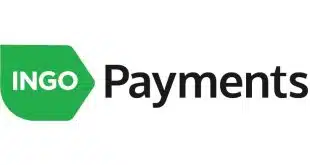Major financial institutions are prepared to make bigger investments in mobile payments next year, but may not be moving fast enough to ward off non-bank competition, according to a report issued earlier this week.
The chief type of mobile payments these institutions will be pouring money into in 2012 is person-to-person payments, cited as a top priority by seven of 10 banks and credit unions surveyed in September by Forrester Research on behalf of banking-solutions vendor Fiserv Inc., Brookfield, Wis. Currently, only one of the 10 offers a mobile P2P service. The most popular current services are account transfers and bill payments, offered by nine of the 10.
All 10 institutions, which the report does not name, have assets exceeding $1 billion, with three exceeding $100 billion. The 10 account for one-third of all U.S. deposit accounts.
Overall, eight of the 10 financial institutions plan to invest in mobile payments next year, with one institution indicating it will spend at least 20% of its digital-technology budget in this category. Three of the 10 surveyed mobile strategists said they will spend between 10% and 20% of their budget on mobile payments.
The new emphasis on mobile payments in banking comes after a year in which several major non-bank entities either launched or announced plans for mobile programs. Web giant Google Inc. launched a commercial point-of-sale service in September that relies on its own wallet technology and near-field communication (NFC), a type of contactless technology suited to smart phones. Isis, a joint venture formed by the country’s largest wireless carriers, plans to launch its NFC service in two cities next year, with a wider launch in 2013.
But the big banks and credit unions surveyed by Forrester exhibit a less aggressive attitude toward mobile POS payments compared to P2P. Against the backdrop of what the report calls a “wait-and-see” attitude, half of the 10 respondents indicated plans are afoot for POS pilots in 2012, with . Deterring many of the respondents are concerns about merchant acceptance, particularly retailers’ willingness to bear the costs of installing and integrating new terminals. These respondents also fear merchants may have reservations about consumer adoption.
Still, the Fiserv report indicates an increased sense of urgency about POS payments via mobile. “Right now, we are a follower, but we are trying to do a bit more by doing some pilots,” the report quotes one respondent. “[We] want to put a foot into the water to see what consumers are going to do.” Two of the 10 institutions, both of them in the $100-billion-plus category, offer a mobile POS service currently.
Indeed, Calvin Grimes, manager for mobile solutions at Fiserv, tells Digital Transactions News that the mobile strategists who responded to the survey showed a much more sophisticated knowledge of mobile payments than was the case in a similar survey conducted in October 2010. “The ultimate prize everyone is going after is the point of sale,” Grimes notes, adding that Fiserv and Forrester saw more activity here than a year ago.
The big question is whether this new sense of urgency is developing fast enough to meet the challenge from non-bank players, according to the report. While the surveyed institutions said they were aware of the activities of Google, Isis, and other players, the majority said these moves have had little or no effect on their own plans. That attitude could put customer relationships at risk as consumers increasingly turn to non-banks for mobile services they’re not getting from their financial institutions, the report warns. Many of these customers, once lost, will not return, it says.
Indeed, the report advises banks and credit unions to move faster on mobile payments, particularly at the point of sale. “Financial institutions cannot continue to set on the sidelines and not have a specific strategy,” says Grimes. He cautions that developments in mobile payments can happen with blinding speed and could catch banks and credit unions flatfooted if they don’t begin planning soon.
The report points out that financial institutions enjoy a key advantage over non-banks in that they are more trusted by consumers than any other provider.”Consumer trust and look for their financial institutions to provide these services,” says Grimes. Some 40% of consumers cited “my bank or credit union” as their most trusted provider of mobile-payments services, according to a separate Fiserv study cited by the report. This is well ahead of other sources, including second-place PayPal (35%) and third-place Visa (33%). Google comes in sixth, with 9%.







